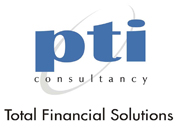In case you fail to submit these proofs, the employer cuts tax deducted at source (TDS) in the last three months of the financial year, that is January to March. This tax can be claimed as a refund when you file your income tax return in case you do invest before the financial year ends but fail to submit the proofs within the required timeline.
Making last-minute tax saving investments is not the right thing to do and it is recommended that you do your tax planning right at the beginning of the financial year. This will help you avoid the strain on your finances during the last few months of the financial year and help you spread the investments.
If you’ve still not made your tax-saving investments but plan to do so now, here’s a guide on how to go about it.

View Full Image
Do the maths
First of all, you need to calculate how much you actually need to invest. To arrive at this, consider the various deductions that you are eligible for due to certain mandatory expenses or investments. For example, under Section 80C, under which you can avail of a deduction of up to ₹1.5 lakh, consider your Employees’ Provident Fund (EPF) contribution, principal repayment towards a home loan and tuition fees paid for up to two children, among others.
Once you have this number, you can invest to plug the shortfall. For example, if your EPF and home loan principal adds up to, say, ₹1.1 lakh, you will have to invest another ₹40,000 to exhaust your 80C benefit.
Apart from this, add up any life insurance premium under Section 80C.
The right product
Time is short but don’t be in a hurry and make the wrong investment decision. You need to analyze tax-saving investment products primarily on four parameters—liquidity or lock-in, expected return, risk of capital and, of course, taxation.
The best tax-savings instruments enjoy the exempt-exempt-exempt (EEE) tax status. EEE means an individual gets tax benefit on investment, on accrual, and at the time of redemption. EPF and Public Provident Fund (PPF) have EEE status. However, both these products have a long lock-in period. EPF is a retirement savings product which allows premature withdrawals only under certain circumstances, while PPF has a lock-in of 15 years.
Equity-linked saving schemes (ELSS) are a better option in terms of liquidity as it has the lowest lock-in of three years. However, the returns are market-linked and not guaranteed like that of EPF and PPF. ELSS can help in building long-term wealth but are riskier. Note that the gains from equities are taxable. Long-term capital gains (on investment for more than a year) over ₹1 lakh are taxable at the rate of 10%.
“Equity is meant for long-term goals (ideally if the goals are more than five years). However, many opt for ELSS mainly because of the three-year lock-in compared to other tax-saving instruments where the lock-in is five years or more. Choose ELSS for your long-term goals and that also with proper asset allocation between debt and equity. Never invest in ELSS if you are looking for money after three years," said Basavaraj Tonagatti, a Sebi-registered financial adviser.
“To cover the shortfall, individuals could consider either topping up into their PPF or investing in an ELSS or look at the pension plan options from mutual funds that also give 80C benefit," said Vishal Dhawan, founder, Plan Ahead Wealth Advisors, a Sebi-registered investment adviser.
Risk-averse investors can also opt for tax-saving fixed deposits, which come with a lock-in of five years. However, the interest rates on these are currently quite low. Also, the interest income is fully taxable at the marginal tax slab rate. If you are in the highest income tax bracket, you may actually end up with a negative real rate (which takes into account the bite inflation and tax take out of the total return) by investing in them.
Saving at the last minute is likely to put a strain on your finances, so prepare a tax-related investment budget for these three months. Consider your expenses, including your utilities and liabilities, to assess how much you can spare to invest. Say, you can spare ₹20,000 each month. Now, decide how you want to use it and where you want to invest. For example, you can choose to invest ₹15,000 in ELSS and ₹5,000 in PPF per month. “In case a person is opting for ELSS, he or she can spread the investments over the three months starting January," said Dhawan.
However, remember that for each systematic investment plan (SIP) instalment for an ELSS, the three-year lock-in period is separate and starts from the date when the SIP is debited from your account. So, if you invest in February 2021, the lock-in will end in February 2024, while for the March 2021 instalment, the lock-in will end in March 2024.
Tax-saving investments should be made in line with your financial goals, therefore it is very important to choose the right instrument. Also, next time, ensure you plan in advance to avoid the last-minute financial burden.
